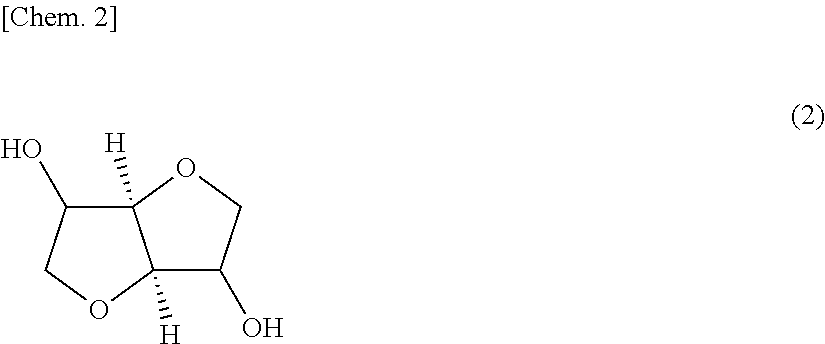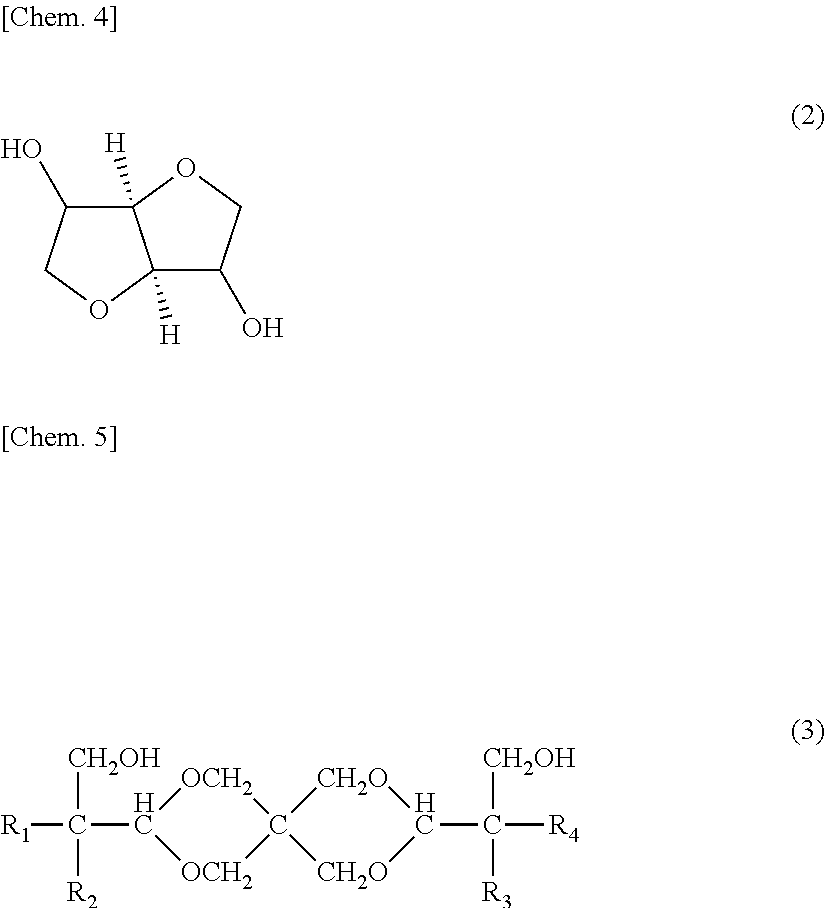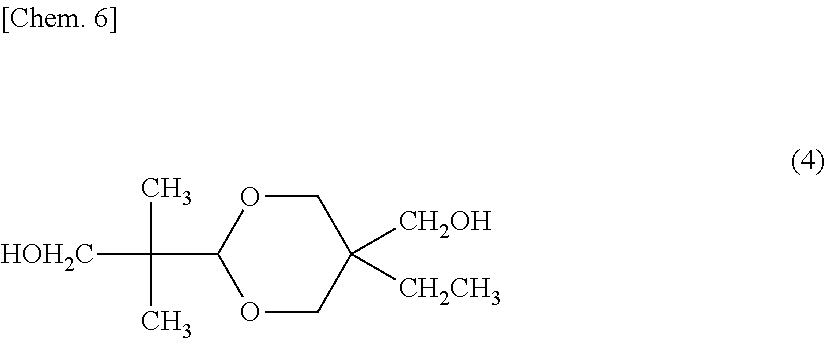Laminate
a technology of laminate and abrasive resistance, applied in the field of laminate, can solve the problems of insufficient light transmission or reflection properties of aromatic polycarbonate resins, surface layer not having a sufficiently heightened hardness, abrasion resistance, etc., and achieves excellent surface hardness and impact resistance of products, reduces product thickness, and rouses few troubles
- Summary
- Abstract
- Description
- Claims
- Application Information
AI Technical Summary
Benefits of technology
Problems solved by technology
Method used
Image
Examples
examples
[0159]The invention will be explained below in more detail by reference to Examples, but the invention should not be construed as being limited by the following Examples.
[0160]The resins used in the Examples are as follows.
[0161](A-1 and A-2) Polycarbonate resins for constituting the layer A according to the invention, the resins each containing structural units derived from isosorbide and structural units derived from 1,4-cyclohexanedimethanol, in the respective amounts in mol % as shown in Table 1. (Glass transition temperature of A-1, 120° C.; reduced viscosity of A-1, 0.56 dL / g; glass transition temperature of A-2, 101° C.; reduced viscosity of A-2, 0.57 dL / g)
[0162](B-1) “Iupilon S3000”, manufactured by Mitsubishi Engineering-Plastics Corp.; an aromatic polycarbonate resin for constituting the layer B according to the invention. (Glass transition temperature, 150° C.; reduced viscosity, 0.49 dL / g; viscosity-average molecular weight, 20,000)
[0163]On the other hand, in the Compara...
PUM
| Property | Measurement | Unit |
|---|---|---|
| Thickness | aaaaa | aaaaa |
| Thickness | aaaaa | aaaaa |
| Structure | aaaaa | aaaaa |
Abstract
Description
Claims
Application Information
 Login to View More
Login to View More - R&D
- Intellectual Property
- Life Sciences
- Materials
- Tech Scout
- Unparalleled Data Quality
- Higher Quality Content
- 60% Fewer Hallucinations
Browse by: Latest US Patents, China's latest patents, Technical Efficacy Thesaurus, Application Domain, Technology Topic, Popular Technical Reports.
© 2025 PatSnap. All rights reserved.Legal|Privacy policy|Modern Slavery Act Transparency Statement|Sitemap|About US| Contact US: help@patsnap.com



